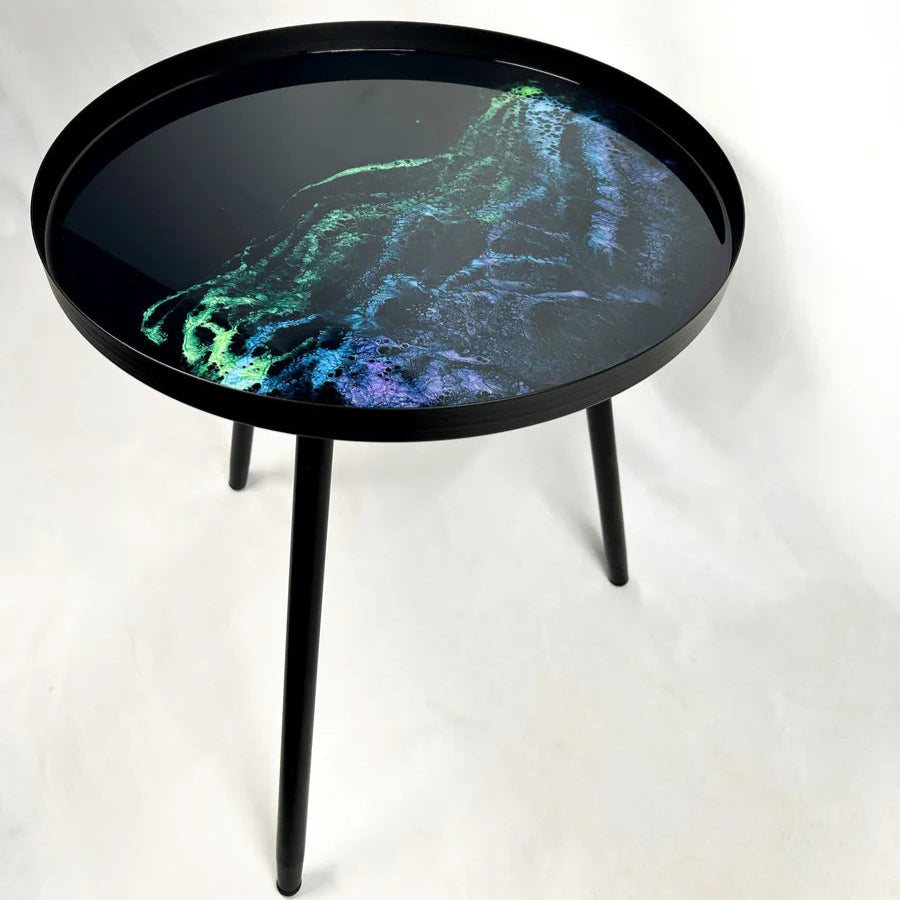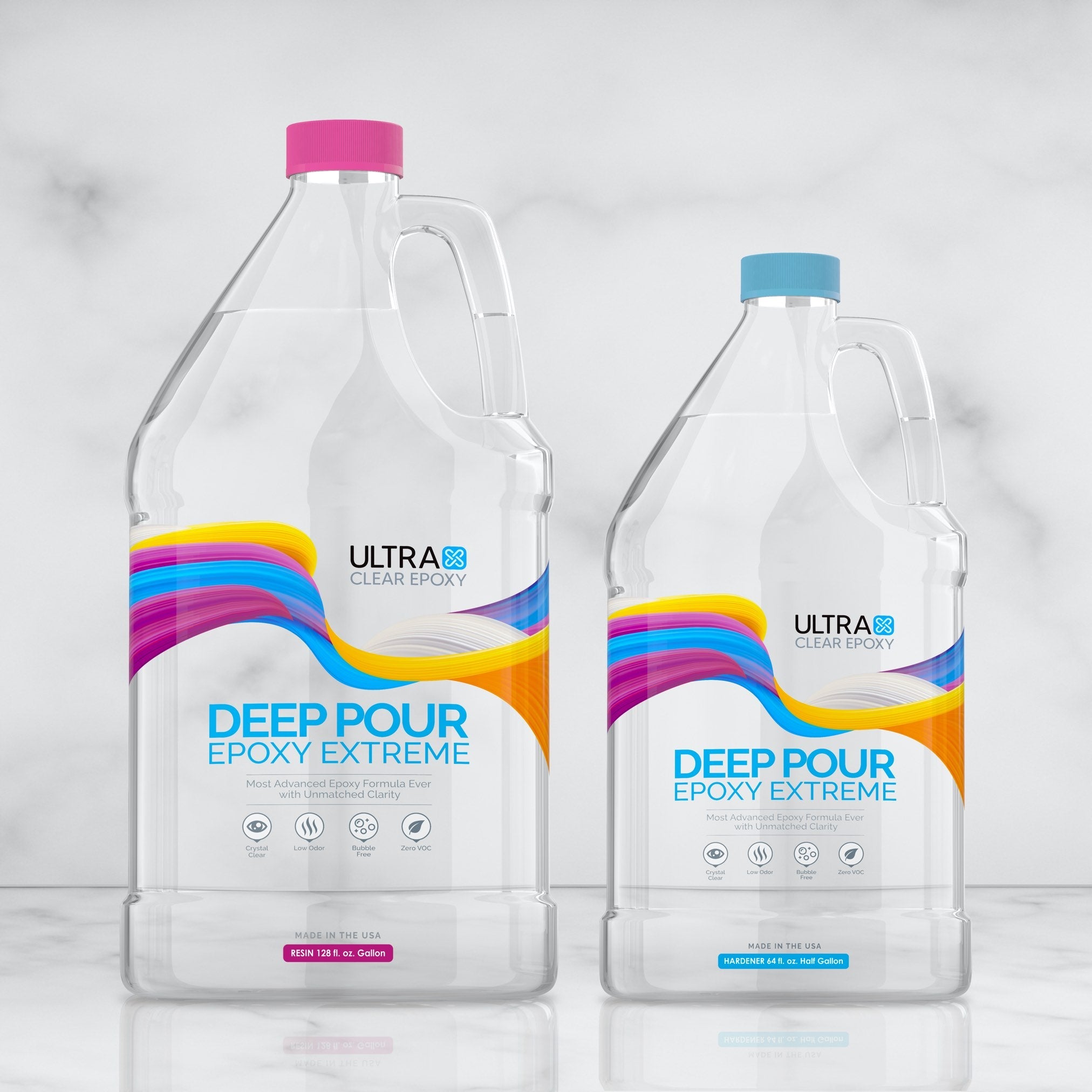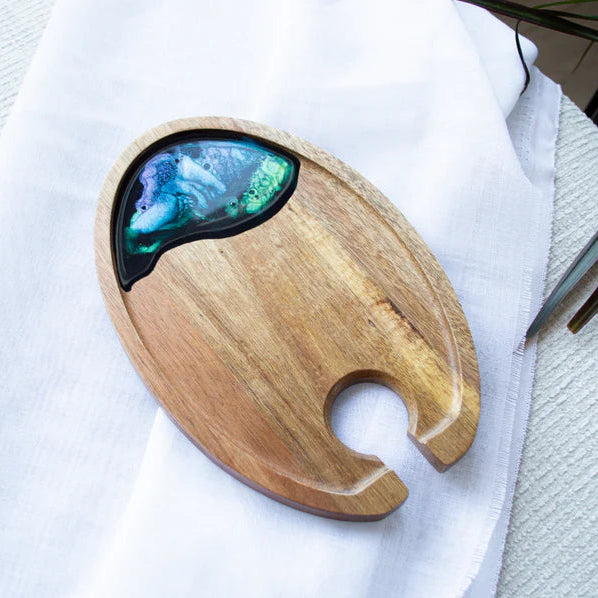When I made my first epoxy table, I had no idea what I was doing. I watched a few YouTube videos, bought some resin, and just went for it. What followed was a sticky, bubbly, slightly warped mess I was still weirdly proud of—but man, I wish someone had given me these tips first. So here they are: the epoxy table tips I’ve learned the hard way.

1. The Wood Is Just As Important As the Epoxy
If it’s too wet? It’ll ruin your pour.
Moisture in wood = bubbles, cloudiness, or full-on epoxy failure. I use a moisture meter now. Under 10% or I don’t pour. I break this down in more detail over in this post on choosing the best wood for epoxy tables.
Softwoods? More prone to bubbles and leaks.
They’re beautiful, but softwoods like pine are porous and unpredictable. They’ll gas out mid-pour if not sealed properly.
My go-to: kiln-dried walnut, maple, or monkeypod every time.
They’re stable, strong, and the grain looks insane under resin.

2. Build a Mold That Doesn’t Leak — Seriously
My first mold soaked through like a sponge
I used scrap wood and prayed. Bad plan. The entire bottom layer leaked and left the slab swimming in half-cured resin.
Use Tyvek tape. Seal every corner like it’s a submarine.
Tyvek is slick, reusable, and resin doesn’t stick to it. Combine that with HDPE or melamine and you’ve got a solid mold.
Caulk the seams. Clamp everything. Test with water first.
Before you pour resin, pour a little water in the mold. If it leaks water, it’ll leak epoxy—guaranteed. I walk through more of this in this full mold-building guide.

3. Don’t Pour Deep Epoxy in One Shot
It heats up, cracks, bubbles — total disaster
Deep pour epoxy sounds bulletproof until you pour 2.5 inches at once and it starts to smoke.
I learned to pour in layers (1–1.5 inches at a time)
Yes, it takes more time. Yes, you’ll thank yourself when the surface cures flat and clear.
Yes, it takes longer. Yes, it’s worth it.
Better one smooth pour than redoing the whole piece because of thermal cracks. I talk more about resin types in this breakdown of tabletop vs deep pour epoxy.

4. Torch Bubbles, But Don’t Overdo It
Quick sweeps with a flame — don’t sit in one spot
Hovering the torch can scorch the resin, burn the wood, or create ripples in a half-set pour.
I once scorched a pour with a heat gun trying to “fix” it
Pro tip: don’t chase perfection. Get the worst of the bubbles, then let the resin do its thing.
Let the resin rest — some bubbles will rise naturally
Give it 5–10 minutes after mixing before pouring. That extra time helps bubbles escape on their own.

5. You Can’t Rush Curing (No Matter How Badly You Want To)
“It’s dry to the touch” ≠ “it’s ready to sand”
Curing means chemical hardening, not just surface dryness. If you sand too early, it’ll gum up and scratch.
I waited 72 hours minimum before touching mine
Even longer in cool temps. Patience here is everything.
Full cure takes 5–7 days — don’t install legs before that
The resin needs to reach max strength before bearing weight. Rushing this step is asking for warping.
6. Sanding Will Test Your Patience
Start low (80 grit) and work up to 400 or 600
Don’t skip grits. Each level removes the scratches from the one before it.
Wet sanding helps — especially with clear finishes
I wet sand from 320 grit upward. It reduces dust and gives a smoother finish.
Don’t rush. Every scratch will show.
Especially if you’re going for a glassy finish—any shortcut here = regret later. If you’ve dealt with these issues, you’re not alone. I share more in this post on common epoxy table problems.

7. Finish Strong: Oil, Wax, or Urethane?
I tried all three — here’s what actually looked best
Each has its place. Depends on the feel and function you’re after.
For natural feel: Rubio Monocoat or Walrus Oil
These bring out the grain without adding gloss. They’re easy to maintain and smell great too.
For shine and protection: hard-wax oils or conversion varnish
These give that deep, rich finish and stand up better to moisture and scratches. I compare long-term wear in this post on resin table durability.

Final Thought: The Best Tips Come From Messing Up
No blog, video, or checklist replaces doing it
You’re going to mess up a pour. You’ll scorch a surface. You’ll sand through a corner. That’s how you get better.
Epoxy’s not “easy” — but it is addictive
The moment when you pull off the mold and see the light hit that resin for the first time? Worth every mistake.
Every mistake I made taught me more than a win ever did
So try it. Mess it up. Fix it. Pour again. That’s the real process.
Thanks for taking the time to read—I really appreciate it. I hope something in my process (or my mistakes) helps you along the way. If you want a custom piece or hit a wall building your own, feel free to drop a comment or reach out—happy to help. Have a blessed day!







Share: